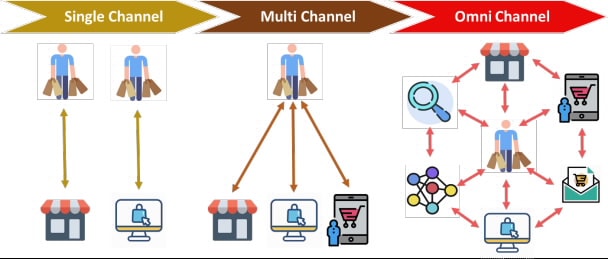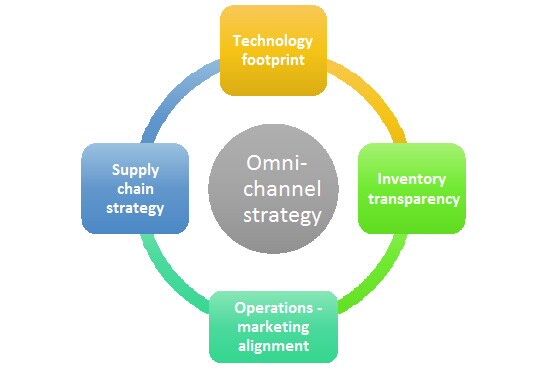Rethinking supply chains from the lens of omni-channel retailing
To provide customers with a seamless and glitch-free experience of shopping across platforms and channels, a more integrated approach is required


 Image: Shutterstock [br]The rising digital penetration and affordable access to data have led to an emergence of customers who demand convenience and flexibility to buy products and services through online and offline mediums. To address the evolving consumer needs, retailers have moved into multi-channel retailing, enabling their products/services to reach consumers via multiple channels, online and offline. The multi-channel retailing allows consumers to access various products and services through multiple channels, devices, and platforms. Large appliances, mobile, and apparel are some of the sectors that have successfully exhibited a mixed retail model comprising of both online and offline channels.
Image: Shutterstock [br]The rising digital penetration and affordable access to data have led to an emergence of customers who demand convenience and flexibility to buy products and services through online and offline mediums. To address the evolving consumer needs, retailers have moved into multi-channel retailing, enabling their products/services to reach consumers via multiple channels, online and offline. The multi-channel retailing allows consumers to access various products and services through multiple channels, devices, and platforms. Large appliances, mobile, and apparel are some of the sectors that have successfully exhibited a mixed retail model comprising of both online and offline channels.
Despite its success in bringing online consumers to the retailers, multi-channel retail also led to several supply-chain challenges, starting from distribution to inventory management, data management, etc. The core problem lies in multi-channel retail design, which envisioned different channels as separate entities resulting in conflicts between these channels.
From the customer"s perspective, however, online and offline channels were two sides of the same coin. They may come across an ad on Instagram, then look up the product on the company website, then use the mobile app to make a purchase and expect the product to be delivered to their doorstep from the company store or the warehouse. To provide customers with such a seamless and glitch-free experience across platforms and channels, a more integrated approach was required, and thus Omni-channel retail was born.
Omni-channel retailing constitutes a business model wherein a seamless shopping experience is delivered to the customers by integrating all the existing channels. It combines both the models" features and integrates them with a centralized data management system, blurring offline and online modes. There are many benefits of shifting to omni-channel strategy. According to a 2017 Harvard Business Review study, omni-channel customers spend 4% more on every shopping occasion in-store and 10% more online than single-channel customers. Another study by IDC research indicates that Retailers using omnichannel marketing strategies saw a 15–35% increase in average transaction size, a 5–10% increase in loyal customers’ profitability, and a 30% higher lifetime value than those who shop using only one channel. Also, according to an Aberdeen report, omnichannel increases customer retention rate, with companies with robust omnichannel strategies enjoying a retention rate of 89% compared Picture 31 with 33% for other companies. Overall, omnichannel strategies enable companies to acquire new customers and deepen customer relationships, thereby improving sales and margins, and reducing overhead costs.
There are many benefits of shifting to omni-channel strategy. According to a 2017 Harvard Business Review study, omni-channel customers spend 4% more on every shopping occasion in-store and 10% more online than single-channel customers. Another study by IDC research indicates that Retailers using omnichannel marketing strategies saw a 15–35% increase in average transaction size, a 5–10% increase in loyal customers’ profitability, and a 30% higher lifetime value than those who shop using only one channel. Also, according to an Aberdeen report, omnichannel increases customer retention rate, with companies with robust omnichannel strategies enjoying a retention rate of 89% compared Picture 31 with 33% for other companies. Overall, omnichannel strategies enable companies to acquire new customers and deepen customer relationships, thereby improving sales and margins, and reducing overhead costs. With digitization trends sweeping across the world, India too is picking up the pace. Most of the urban internet users are shopping online and searching for products through mixed pathways online. According to recent market research, there are nearly 90 million online shoppers today in India. Out of these, 70 percent of the shoppers admit being influenced by digital trends and channels before making an actual purchase. Moreover, 75% of Indian customers look for a brand online before making an in-store purchase.
With digitization trends sweeping across the world, India too is picking up the pace. Most of the urban internet users are shopping online and searching for products through mixed pathways online. According to recent market research, there are nearly 90 million online shoppers today in India. Out of these, 70 percent of the shoppers admit being influenced by digital trends and channels before making an actual purchase. Moreover, 75% of Indian customers look for a brand online before making an in-store purchase.
Some of the brands that have successfully managed to adopt omni-channel retail in India include – Van Heusen, Zivame, Pepperfry, Raymond’s, Adidas, etc. A case in point is Reliance’s JioMart, which would enable local Kirana stores’ digitization through Jio’s point-of-sale solution at the back end and connect of end-users through the JioMart app on the frontend. Reliance’s AJIO in the fashion and apparel industry aims to integrate the e-commerce site with Reliance Trends to cater to emerging consumer trends.
Successful omni-channel retailing strategy requires four major pillars. These are an integrated supply chain strategy, inventory transparency across channels, technology footprint to facilitate the execution, and right alignment of the operations & supply chain strategy with the marketing strategy.
Diagram 1 An integrated supply chain strategy constitutes a distribution system that drives forward and backward processes. Broadly, it involves fulfilling customer orders at stores, offer home delivery and store pick-up services, and home pick-up or in-store pick-up of return from online orders. The distribution network would combine different modes to deliver products and services to customers at their convenience. Additionally, the retailer must also develop return logistics capabilities to handle the return of goods across channels. This requires the omni-channel retailer to anticipate demand accurately to ensure availability, manage lead-times across channels, and factor-in cost implications to ensure business feasibility.The second important factor is inventory transparency. The integration of information, goods, and funds across all the channels remains the fundamental challenge involved with the omni-channel distribution model. A robust data management system and innovative business practices are required to overcome this challenge. The third piece of the puzzle is the technological footprint. In omnichannel retailing, online and physical operations are in complete synchronization, without any barriers in between. The inventories, logistics channels, and supply chain network are managed as unified entities, allowing retailers to immediately respond to customer requirements anywhere and anytime. With consumers browsing, purchasing, and returning goods across various channels, the supply chain must become sufficiently agile and capable enough to provide real-time visibility of inventory across the channels, manage the movement of goods and ensure a steady supply of inventories. Technology plays an enabler"s role that helps integrate product platforms, customer engagement channels, and back-end supply chain.
The fourth factor addresses the necessity to have proper overlap and synergy between marketing and supply chain strategies to deliver a differentiated customer experience. The supply chain must be designed to augment the marketing effort and thus be able to serve the customers where they are and render the ability to engage with customers on a real-time basis.
To summarise, the overall industry trend is to adopt new, innovative channels to reach consumers and integrate them to deliver an omni-channel experience. According to a joint report by Deloitte Touche Tohmatsu India and FICCI, hyper-local distribution models and omni-channel strategy will be the key to businesses" growth in the near future. Further, the Covid-19 pandemic has forced many businesses to re-think their strategy and are trying to build capabilities to serve customers across online and offline channels. Thus, it is imperative for companies to successfully implement an omni-channel strategy to remain relevant and competitive going forward.
By Professor Amar Sapra, from the Production and Operations Management area at IIMB, and PGP students Ronak Bose and Tushar Dhande.
First Published: Mar 05, 2021, 10:28
Subscribe Now